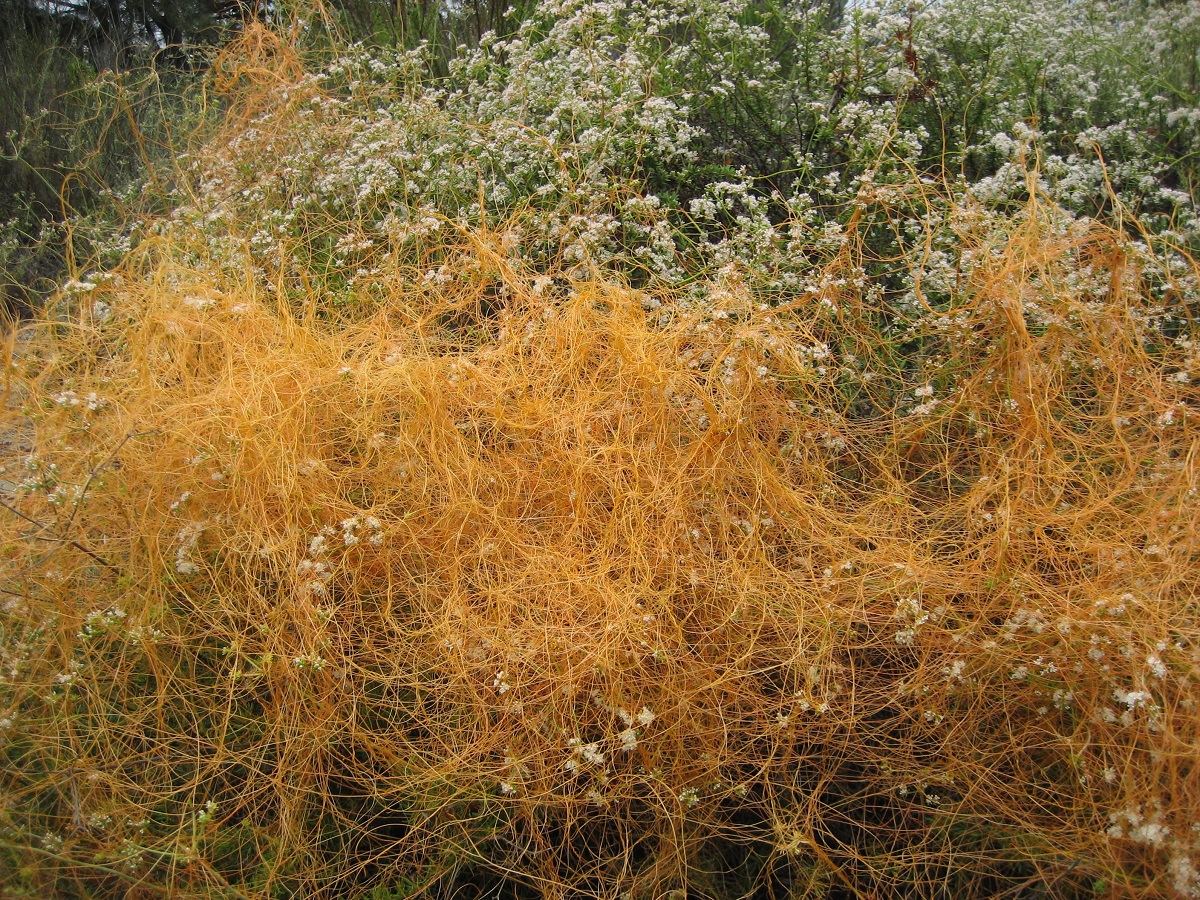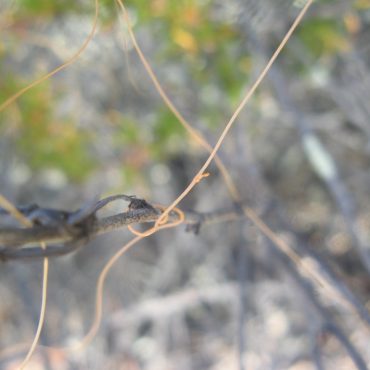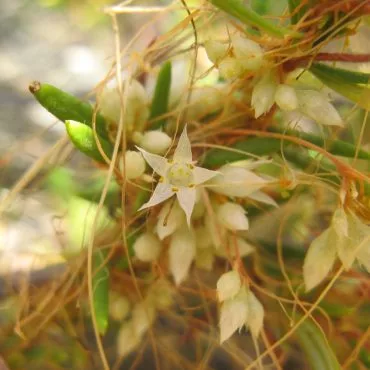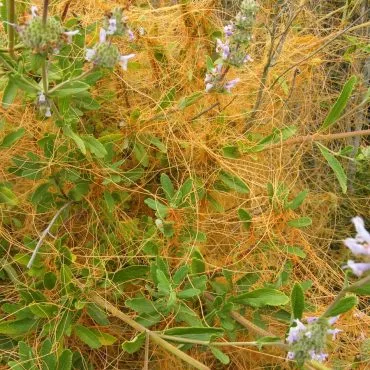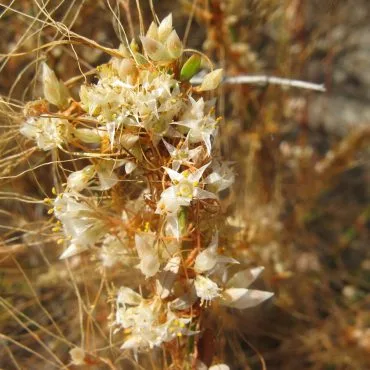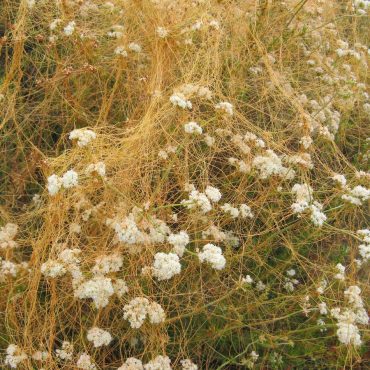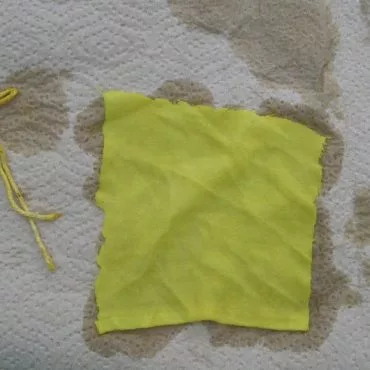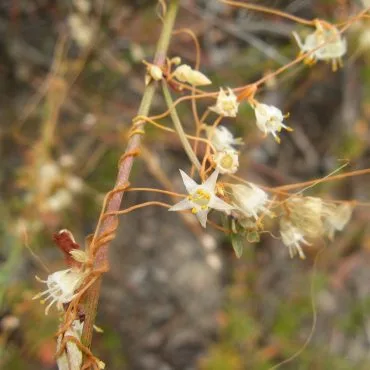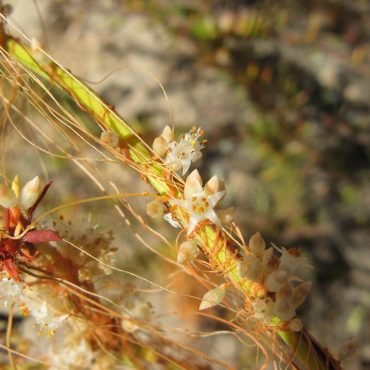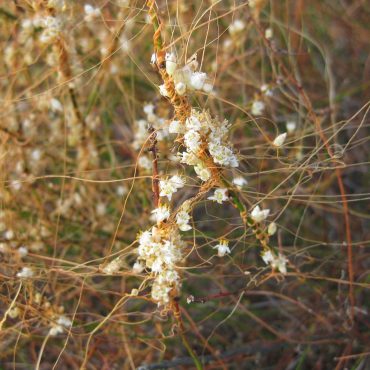Ecology
In spite of the fact that California dodder spends most of its life with no contact with soil, it reproduces by means of a normal, rooted seed. The seed contains enough carbohydrates to support the seedling’s growth for 5-10 days. During that time, if the dodder is to survive, it must reach and attach to a suitable host. Since not all plants are suitable and hosts may be widely spaced, it seems unlikely that the dodder depends on random chance. In fact, in 2006, three researchers demonstrated that a dodder seedling can “smell” its host.98,99 All plants emit volatile organic compounds. Some, such as the pungent aroma of sagebrush, are readily detected by humans. In the case of dodder, the volatile compounds produced by a host plant direct a seedling to the host, whereupon it penetrates the host tissue with small root-like structures called haustoria, and the original root dies. At that point, the dodder becomes dependent upon the host for all its water, mineral and carbohydrate needs.
One dodder plant can completely engulf its host plant. In fact, a single dodder can infect more than one host at the same time. In spite of this, it is unusual for the native dodder to kill its native host.41 California dodder is an annual plant. In the Reserve, the hosts are perennial. If the host survives the months of infestation, the parasitic dodder will die and the host has a recovery period. Only if a host is unlucky enough to be infected several years in a row, is it likely to die entirely. Thus the native dodder and their native hosts have reached a balance that assures persistence of the host species and hence a continuing supply of hosts for the dodder.

